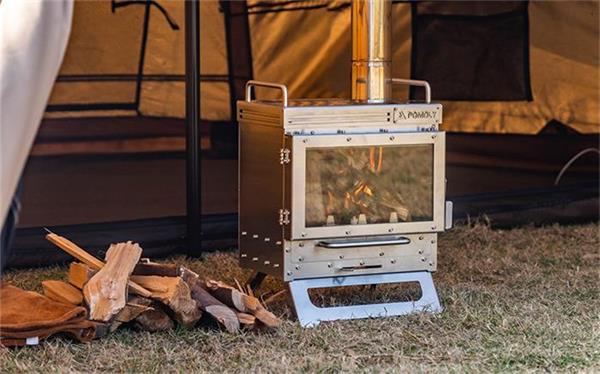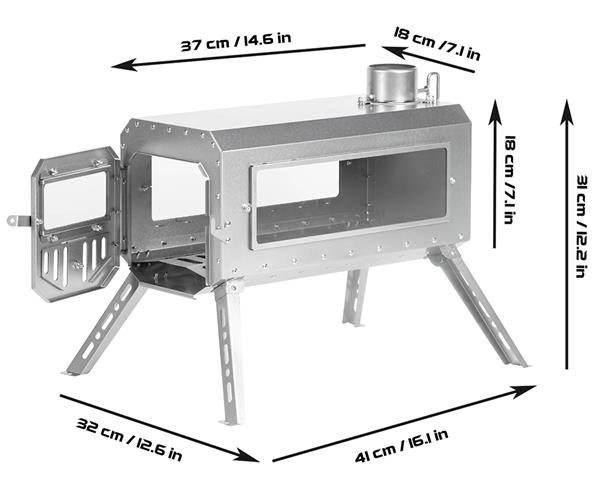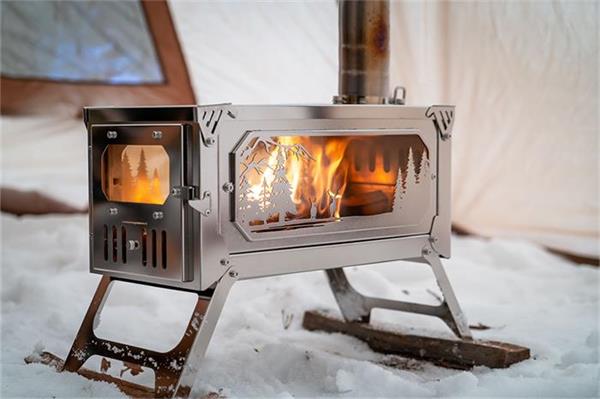Understanding the two types of wood stoves, the materials used to make them, and their heating capacity is all vital when shopping for one of these appliances. Ahead, learn more about these and other important attributes of the best wood stoves.
Types of Wood Stoves
Wood stoves are available in two types: catalytic and noncatalytic. Catalytic wood stoves differ from noncatalytic in that they produce fewer exhaust fumes and burn more efficiently. In addition to burning wood, catalytic wood stoves also have a combustor that burns smoke and byproducts. This design allows the stove to burn cleaner with a slower burn rate, conserving fuel. Efficiency ratings for a catalytic wood stove range between 63 and 84 percent, making them ideal options for use as a primary source of heat.
Noncatalytic stoves are cheaper but not as efficient. They are better suited for use as a supplemental heater.

Material
Most wood stoves are made of one of three materials: cast iron, steel plate, or titanium. Cast iron is the most commonly used material. Compared with other materials, titanium has faster heating speed and longer holding time. However, it does crack more easily and is more expensive than other materials.
Plate steel, also a common material used in wood stoves, is durable and retains heat well, though not as well as cast iron. Soapstone is the high-end material for wood stoves. It retains heat better than cast iron, burns cleaner than other materials, and can burn for 24 hours or longer on a single load. Most wood stoves consist of either soapstone or plate steel with a cast-iron door.

Heating Capacity
A wood stove’s heating capacity determines how large of a space the wood stove can keep warm when it’s running with a full load of wood. The heating area for most stoves ranges from around 1,200 square feet for a small stove to as much as 2,200 square feet (or more) for a large model.
Keep in mind that, unlike a home’s central heating, which distributes heat through ductwork, a wood stove emanates heat from the fire, so the heat isn’t evenly distributed. The farther someone is from the wood stove, the cooler the temperature will be.
BTUs
The heat output of a wood stove is measured in BTUs (British Thermal Units). Wood stoves range in BTU output from around 50,000 to 80,000 BTUs. The more BTUs, the greater the size of the space the wood stove can heat. A large 70,000-BTU wood stove can warm up to 2,200 square feet. While BTU level is a great indication of how powerful the stove is, not all manufacturers provide BTU information for their stoves.
Burn Time
A wood stove’s burn time is the amount of time one load of wood lasts before the stove requires reloading. Each stove’s burn time is determined by how much wood it can hold as well as the heat output of the stove, which can be regulated using the stove’s damper. The type of wood being used also affects burn time. Hardwoods burn more efficiently than softwood, which is less dense and therefore burns more quickly and at lower temperatures.
Safety
Wood-burning stoves produce toxic emissions; they create carbon monoxide, which can be deadly if not properly vented outside. Wood stoves are regulated by the Environmental Protection Agency, which performs safety tests on wood stoves to make sure they’re safe for consumer use. The emission limit for wood stoves is 2 grams to 2.5 grams per hour, depending on the type of wood. Catalytic stoves produce well under the EPA’s maximum, with emissions of around 0.5 grams per hour. Never buy a wood stove that is not certified by the EPA.
Weight and Size
Perhaps the most important thing to consider when shopping for a wood stove is where it will go in the living space. Most freestanding wood stoves take up a significant chunk of real estate since they measure about 3 feet wide and 2 feet deep and require a buffer around them for safety. Portable models are much smaller—about 20 inches high and 10 inches deep and less than 40 pounds—allowing them to fit in the trunk of a car for a camping trip.
Keep in mind that the size of the stove also affects the size of wood they can burn. A standard freestanding or insert wood stove can hold logs up to 18 inches long, whereas portable models can typically handle logs that measure about 8 inches long.

Additional Features and Accessories
In addition to providing a source of heat, wood stoves also create an ambiance that’s similar to a wood-burning fireplace. Most wood stoves have glass windows that allow people sitting around the stove to watch the burning logs.
Some wood stoves also serve as a cooking stoves, with flat tops that will support a frying pan or pot. Stoves with cooking functions are typically designed for outdoor use and camping trips.


